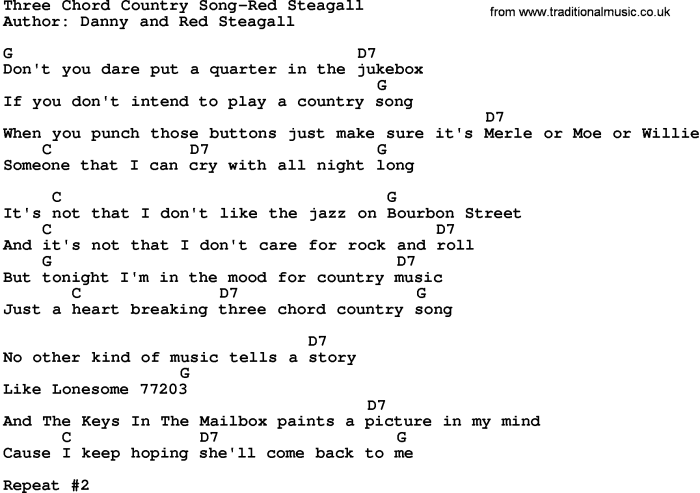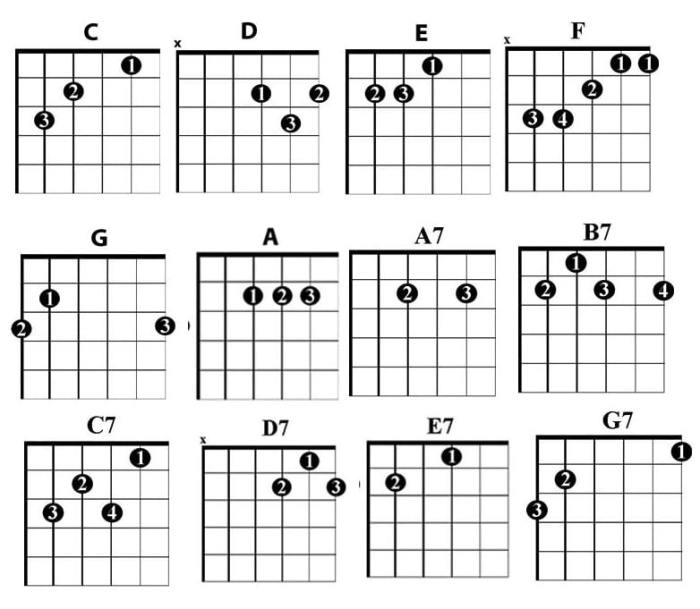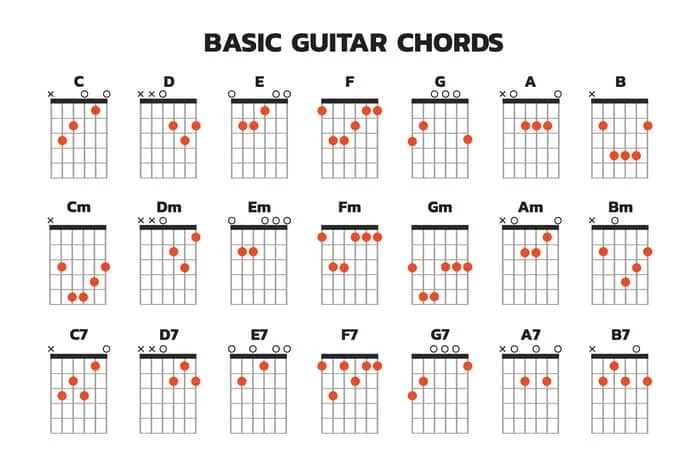Welcome to the world of country guitar! Whether you’re a complete novice or have some musical experience, this guide will equip you with the essential knowledge and techniques to master the fundamentals of country guitar chords. From open chords to fingerpicking patterns, we’ll cover everything you need to get started on your country music journey.
Country music is renowned for its heartfelt melodies and captivating rhythms, and the guitar plays a pivotal role in creating that signature sound. By learning the basic chords and strumming patterns, you’ll unlock the ability to play countless country songs and explore the rich musical heritage of this genre.
Introduction
Country guitar chords are a staple of the genre, providing the foundation for many classic songs. For beginners, learning these chords can open up a world of musical possibilities. This article will guide you through the basics of country guitar chords, helping you to start playing your favorite songs in no time.
Getting Started
To get started, you’ll need a guitar and a few basic chords. The most common country guitar chords are C, G, D, and Am. Once you’ve mastered these chords, you’ll be able to play a wide variety of songs.
Tips for Beginners
Here are a few tips for beginners learning country guitar chords:
- Start with the C chord. This is the easiest country guitar chord to learn, and it’s used in many popular songs.
- Practice regularly. The more you practice, the better you’ll become at playing country guitar chords.
- Don’t be afraid to make mistakes. Everyone makes mistakes when they’re learning guitar. Just keep practicing, and you’ll eventually get the hang of it.
Essential Chords for Country Guitar
Country music is known for its distinctive sound, and the guitar plays a crucial role in creating that signature twang. Mastering a few essential chords will unlock the door to playing countless country songs.
Open chords, where all the strings are played, form the foundation of country guitar. Let’s explore the most fundamental ones:
G Chord
- The G chord is played by placing your fingers on the 3rd fret of the 6th string, the 2nd fret of the 5th string, and the 1st fret of the 1st string.
- It’s a major chord that adds a bright and cheerful sound to country tunes.
C Chord
- The C chord is formed by placing your fingers on the 1st fret of the 5th string, the 2nd fret of the 4th string, and the 3rd fret of the 2nd string.
- It’s a major chord that provides a solid foundation for many country songs.
D Chord
- The D chord is played by placing your fingers on the 2nd fret of the 3rd string, the 3rd fret of the 2nd string, and the 2nd fret of the 1st string.
- It’s a major chord that adds a bit of energy and movement to country music.
Am Chord
- The Am chord is formed by placing your fingers on the 1st fret of the 2nd string, the 2nd fret of the 3rd string, and the 3rd fret of the 1st string.
- It’s a minor chord that adds a touch of sadness or longing to country songs.
Basic Chord Progressions
Chord progressions form the backbone of country music, providing a framework for melodies and lyrics. These progressions typically follow a simple structure, often repeating throughout the song.
12-Bar Blues
The 12-bar blues is a common chord progression used in country music. It consists of three four-bar phrases, each with its own unique chord sequence:
- Phrase 1: I | I | I | I
- Phrase 2: IV | IV | I | I
- Phrase 3: V | IV | I | I
Other Common Chord Sequences
In addition to the 12-bar blues, other common chord progressions found in country music include:
- I
– IV
– V: This simple progression creates a sense of movement and resolution. - I
– V
– IV: A variation of the I
– IV
– V progression, this sequence provides a slightly different harmonic feel. - I
– vi
– IV
– V: This progression introduces a minor chord (vi) for added depth and contrast.
These basic chord progressions provide a solid foundation for country songs, allowing musicians to create a wide range of melodies and moods.
Strumming Patterns
Strumming patterns are rhythmic sequences of downstrokes, upstrokes, and alternate picking that provide the foundation for country guitar playing. Mastering these patterns is essential for developing a solid rhythmic feel and adding dynamics to your playing.
Downstrokes and Upstrokes
Downstrokes involve moving the pick downwards across the strings, while upstrokes move it upwards. Alternating between downstrokes and upstrokes creates a steady, rhythmic pulse.
Alternate Picking
Alternate picking involves alternating between downstrokes and upstrokes on every note. This technique produces a more fluid and even sound than using only downstrokes or upstrokes.
Exercises for Practicing Strumming Patterns
- Start by practicing downstrokes and upstrokes separately, focusing on maintaining a consistent tempo.
- Once comfortable, combine downstrokes and upstrokes in various patterns, such as down-up-down-up or down-down-up-down-up.
- Incorporate alternate picking into your strumming, practicing on simple chord progressions.
- Use a metronome or backing track to help you stay on beat and develop a steady rhythm.
Fingerpicking Techniques
Fingerpicking involves using your thumb and fingers to pluck individual strings on the guitar, creating melodies and accompaniments simultaneously. It’s a fundamental technique for country guitar, allowing for intricate and expressive playing.
Thumb and Fingerpicking Patterns
The thumb typically plays the bass notes on the lower strings, while the fingers (index, middle, and ring) pluck the melody on the higher strings. Common patterns include alternating bass, Travis picking, and Carter style.
Developing Fingerpicking Skills
Developing fingerpicking skills requires practice and coordination. Start with simple exercises that isolate each finger’s movement. Gradually increase the complexity and speed of your patterns as you gain proficiency. Practice regularly to build dexterity and muscle memory.
Exercises
-
-*Alternating Bass
Practice alternating your thumb between the 5th and 6th strings while strumming with your fingers.
-*Travis Picking
Alternate your thumb between the 5th and 6th strings while plucking the 3rd string with your index finger and the 2nd string with your middle finger.
-*Carter Style
Use your thumb to play a bass run on the lower strings, while your fingers pluck a melody on the higher strings.
Common Country Guitar Licks

Incorporating country guitar licks into your solos and improvisations adds authenticity and flair to your playing.
These licks typically involve techniques such as hammer-ons, pull-offs, and slides, creating a distinctive and recognizable country sound.
Hammer-Ons and Pull-Offs
Hammer-ons and pull-offs are techniques used to produce notes without picking the strings. A hammer-on involves striking a fretted note with the picking hand while simultaneously fretting a higher note with the fretting hand. A pull-off is the reverse, where a fretted note is released while simultaneously picking the lower note.
Slides
Slides involve moving a finger along the fretboard while keeping the string pressed down. This technique creates a smooth and expressive transition between notes.
Examples
- Travis Picked Lick: This lick combines hammer-ons, pull-offs, and slides to create a classic country sound. Start by playing the open E string, then hammer-on to the 2nd fret, pull-off to the open E, and slide up to the 5th fret. Repeat this pattern on the A and D strings.
- Bluegrass Lick: This lick features a combination of hammer-ons and pull-offs on the 2nd and 3rd frets. Start by playing the open G string, then hammer-on to the 2nd fret, pull-off to the open G, hammer-on to the 3rd fret, and pull-off to the open G.
- Country Bend Lick: This lick uses a slide to create a bending effect. Start by playing the open B string, then slide up to the 3rd fret and bend it up to the 4th fret. Release the bend and slide back down to the open B.
Practicing these licks regularly will help you develop your country guitar skills and enhance your solos and improvisations.
Soloing Techniques
Soloing is an essential part of country guitar playing, allowing you to express your creativity and improvise over the chord progression. To develop your soloing skills, it’s important to understand the following techniques:
Pentatonic Scales
Pentatonic scales are a great starting point for soloing because they contain only five notes, making them easy to learn and use. The most common pentatonic scale used in country guitar is the minor pentatonic scale, which can be played over any minor or major chord.
Bends
Bends are a technique used to create expressive melodies by bending the string up or down in pitch. To perform a bend, simply press down on the string with your finger and slide it up or down the fretboard. The amount of bend you apply will determine the pitch of the note.
Vibrato
Vibrato is a technique used to add depth and expression to your solos by creating a slight wavering in the pitch of the note. To perform vibrato, simply rock your finger back and forth on the string while you hold it down.
The speed and intensity of your vibrato will determine the sound.
Practice Tips for Beginners

Mastering country guitar requires dedication and practice. Here are some tips to help you get started:
Regular Practice: Consistent practice is key. Aim for at least 30 minutes daily, even when you don’t feel motivated.
Patience and Persistence: Learning guitar takes time and effort. Don’t get discouraged by mistakes; use them as learning opportunities.
Resources: Utilize online lessons, books, and practice materials to enhance your learning.
Find a Practice Buddy: Practicing with others can motivate you and provide constructive feedback.
Recommended Songs for Practice

To reinforce your learning, practice these beginner-friendly country songs that utilize the chords and techniques covered in this article.
Sheet music and online resources are provided for your convenience.
Beginner-Friendly Country Songs
- “Wagon Wheel” by Darius Rucker: This song features simple G, C, and D chords, making it perfect for beginners. Sheet music
- “Take Me Home, Country Roads” by John Denver: This classic song uses G, C, D, and Am chords, providing practice with open and barre chords. Sheet music
- “You Are My Sunshine” by Johnny Cash: This timeless tune features simple C, G, and D chords, making it an excellent choice for strumming practice. Sheet music
- “Ring of Fire” by Johnny Cash: This iconic song utilizes G, C, D, and Am chords, providing a good mix of open and barre chords. Sheet music
- “Will the Circle Be Unbroken” by The Nitty Gritty Dirt Band: This traditional folk song features G, C, D, and Am chords, offering a chance to practice fingerpicking and strumming. Sheet music
Conclusion
Embarking on your country guitar journey can be an enriching and rewarding experience. By grasping the fundamentals Artikeld in this article, you’ve laid a solid foundation for your musical endeavors. Remember, consistent practice is the key to progress, so dedicate yourself to regular practice sessions.
As you continue your learning journey, don’t hesitate to explore additional resources such as online tutorials, guitar books, and workshops. Seek guidance from experienced players or instructors who can provide valuable insights and support.
With dedication and passion, you’ll steadily refine your skills and master the art of country guitar. The road ahead may have its challenges, but embrace them as opportunities for growth. Keep strumming, keep practicing, and never stop pursuing your musical dreams.
Closure
Remember, practice is the key to success in any musical endeavor. Dedicate time each day to practicing the chords and techniques Artikeld in this guide. With patience, consistency, and a passion for country music, you’ll be strumming and fingerpicking your way to musical mastery in no time.
As you progress on your guitar-playing journey, don’t hesitate to seek out additional resources, such as online lessons or workshops, to enhance your skills. The world of country guitar is vast and rewarding, so embrace the learning process and enjoy the musical adventures that await you.
Frequently Asked Questions
What are the most common open chords used in country music?
G, C, D, and Am are the most frequently used open chords in country guitar.
How do I transition smoothly between chords?
Practice transitioning between chords slowly and deliberately, focusing on accuracy and minimizing string noise.
What are some tips for strumming in a country style?
Use a relaxed grip, keep your wrist loose, and experiment with different strumming patterns to find what feels most comfortable and sounds authentic.
How can I improve my fingerpicking skills?
Start with simple patterns and gradually increase the complexity as your coordination and finger strength improve.
Where can I find beginner-friendly country songs to practice?
Many online resources and songbooks offer beginner-friendly country songs that utilize the chords and techniques covered in this guide.